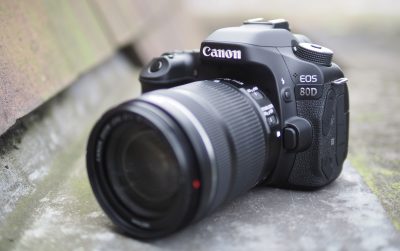Canon EOS 80D review
-
-
Written by Gordon Laing
Quality
To compare the real-life quality of the Canon EOS 80D against the Nikon D7200, I shot this scene moments apart with both cameras fitted with their most common kit lenses. I realize you can achieve better results with higher quality lenses, but I wanted this test to reflect how both bodies performed with the lenses they’re most likely to be sold with. The EOS 80D was fitted with the EF-S 18-135mm f3.5-5.6 IS STM and the D7200 with the AF-S DX 18-105mm f3.5-5.6 VR, with both closed to f8 and their focal length adjusted to deliver the same field-of-view. Both bodies metered the same exposure, and were set to capture JPEGs using the default settings; I have a RAW comparison on my noise page. The full composition is shown below with the areas marked with red rectangles cropped for 100% reproduction in the following table.
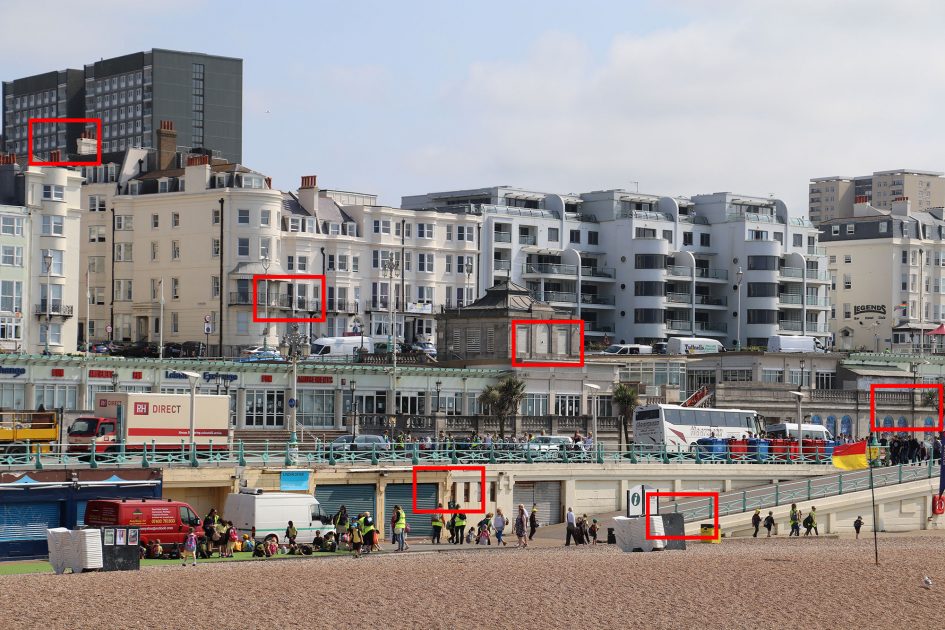
Both cameras share the same 24 Megapixel resolution from APS-C sensors, but the Nikon D7200 dispenses with a low-pass filter which gives it a potential advantage of crisper results with the downside of potentially greater risk of visible moire / false colour shimmering.
Judging from the crops below there’s certainly a striking difference in overall sharpness, with the Nikon D7200 delivering noticeably crisper results with the default settings. The low-pass filter is certainly playing a part here, but I feel their respective lenses are having a greater impact. The fourth row of crops taken from near to the middle of the frame shows the least difference in sharpness, while those towards the edges show the greatest. My conclusion from this would be the Nikkor DX 18-105mm zoom is superior to the Canon EF-S 18-135mm STM in the corners, but also that it’s crisper overall thanks both to its absence of low-pass filtration and fairly soft processing on the part of Canon. Note there is a little evidence of moire in the fine grill patterns on the D7200, but I’d be willing to have it in return for the crisper overall details.
The bottom line here is when shooting JPEGs with the default settings, the Nikon D7200 will deliver noticeably crisper images without modification and that the Nikkor kit zoom is superior towards the edges and corners. A clear win for the Nikon here, although again better results can be had from either body with superior lenses. I should still however note Canon’s sensors and default JPEG processing are still on the softer side compared to Nikon.
Canon EOS 80D and EF-S 18-135mm STM (left), Nikon D7200 and DX 18-105mm (right)
Both lenses set to f8 and zoomed to match field-of-view. Out-of-camera JPEGs.

Above left: Canon EOS 80D, above right: Nikon D7200. Both 100% crops from JPEGs

Above left: Canon EOS 80D, above right: Nikon D7200. Both 100% crops from JPEGs

Above left: Canon EOS 80D, above right: Nikon D7200. Both 100% crops from JPEGs

Above left: Canon EOS 80D, above right: Nikon D7200. Both 100% crops from JPEGs

Above left: Canon EOS 80D, above right: Nikon D7200. Both 100% crops from JPEGs

Above left: Canon EOS 80D, above right: Nikon D7200. Both 100% crops from JPEGs
Next check out my Canon EOS 80D noise results to see how it compares against the Nikon D7200 for both JPEGs and RAW files. Or head on over to my Canon EOS 80D sample images for many examples of the camera in practice, or tab back to my verdict.
Canon EOS 80D noise
To compare the real-life noise of the Canon EOS 80D and Nikon D7200, I shot the following scene with it in their RAW+JPEG modes at each ISO and have presented crops below at 100% from the area marked by the red rectangle. The Canon was fitted with the EF-S 18-135mm IS STM and the Nikon with the DX 18-105mm VR, both closed to f8 and adjusted to deliver an identical field of view. Both cameras were set to identical shutter speeds for each ISO value, so you’re comparing like with like below.
The first table compares crops JPEGs using the default out-of-camera settings, while the second table compares crops made from RAW files processed in Adobe Camera RAW using sharpening of 50 / 0.5 / 36 / 10 and with noise reduction set to zero. The high degree of sharpening coupled with zero noise reduction may be extreme, but reveals exactly what’s going on behind the scenes and how much real-life data you have to work with.
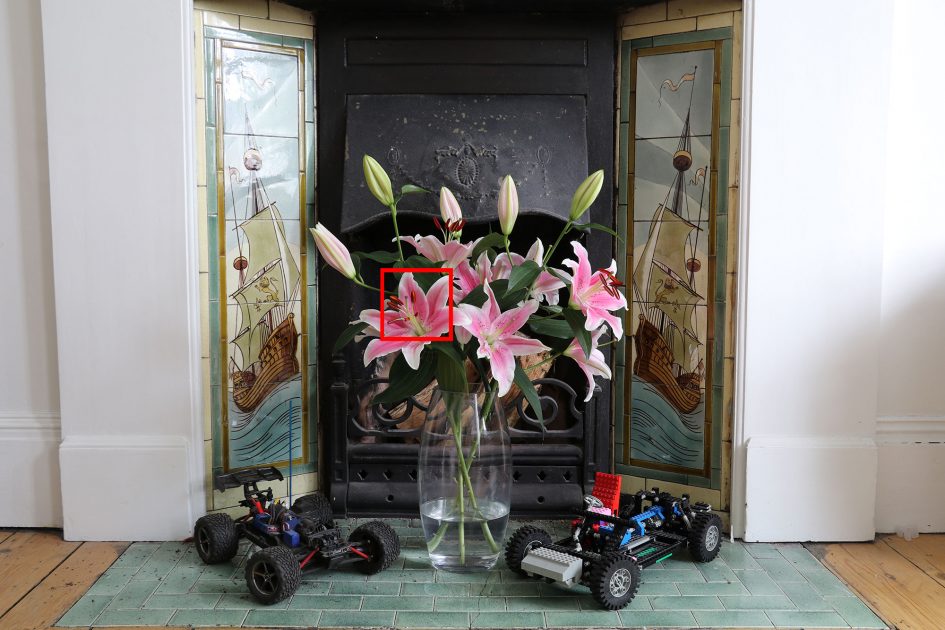
Starting with the JPEGs, there’s a repeat of the previous page where the Nikon D7200 is delivering noticeably crisper and more detailed images, compared to the relatively soft output by default from the Canon. As you’ll see in the later RAW table, the 80D is capturing roughly similar amounts of detail, but the combination of its laid-back JPEG processing and the absence of a low-pass filter on the Nikon means the D7200 is visibly crisper here. I should also say the Nikkor kit zoom is also superior to the Canon one, although with the crops taken from close to the middle of the frame – and at f8 – there’s not a huge difference in the optics here.
I’d also say Nikon’s processing is doing a better job at handling the increase of noise at high ISOs. In particular the EOS 80S at 3200 ISO has become quite a bit softer, and at 6400 ISO is noticeably losing colour saturation. The darker flecks on the petals are also much better-defined on the D7200 than the 80D at higher ISOs. So in terms of JPEGs straight from the camera, I personally prefer the output from the D7200 over the 80D throughout the range.
So does either camera have more data to start with, or is it all down to their respective processing? The second table below shows a comparison of RAW files processed using identical settings to place the cameras on a more level playing field. The EOS 80D looks considerably better here than in its JPEGs, with much finer detail visible. The D7200 still looks a little crisper due at least in part to its lack of low-pass filter, but in terms of real-life detail, they’re very close here.
As the sensitivity increases, both cameras begin to show a sprinkling of noise which to my eyes looks a little coarser on the EOS 80D and suffers from greater chroma noise. Like the JPEG comparison, there’s a noticeable drop in detail from the 80D at 3200 and 6400 ISO with visibly greater noise, although at 12800 and 25600 ISO, neither have much to work with.
There’s two things to take away from this: first is that the Canon EOS 80D is capable of delivering greater detail than its default JPEGs first suggest, whether you process RAW files or adjust the in-camera Picture Style. I’d definitely recommend experimenting away from the default settings on the 80D. The second thing to conclude is the D7200 is delivering crisper and cleaner output whether you’re processing RAW files or shooting with the default settings. Both cameras are fine in isolation, but head-to-head, the D7200 delivered better quality in my tests here.
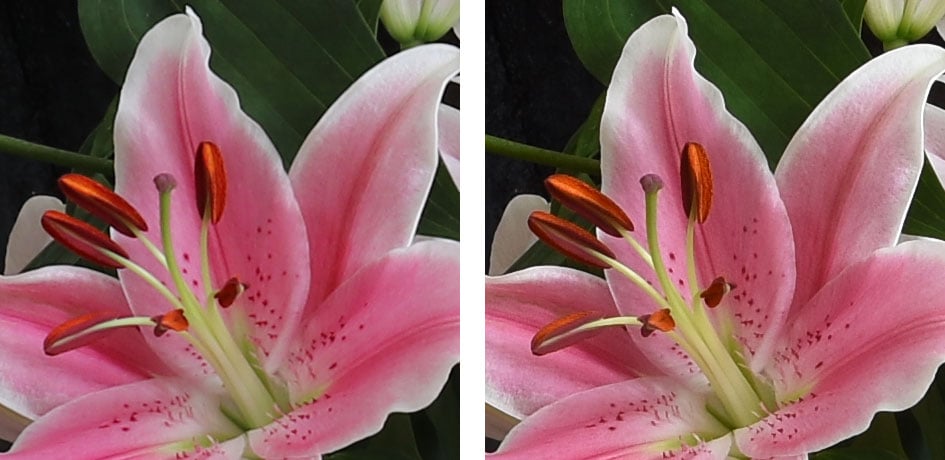
Above left: Canon EOS 80D, above right: Nikon D7200. Both 100% crops from JPEGs at 100 ISO
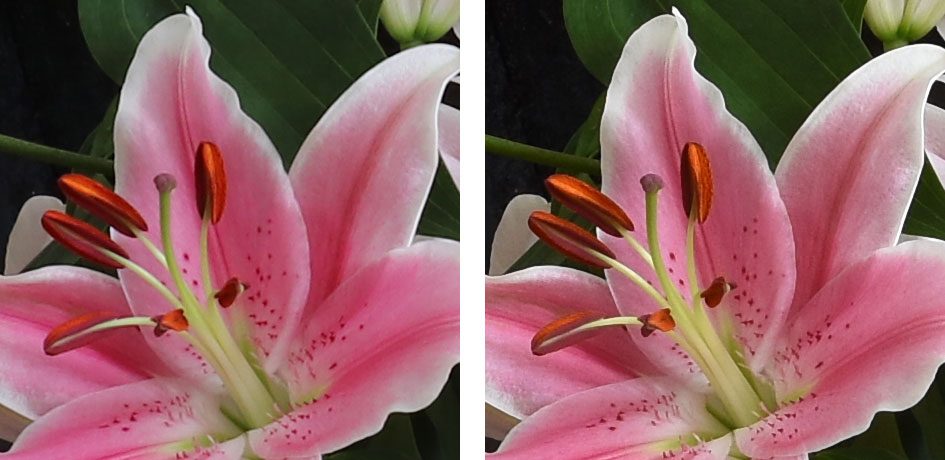
Above left: Canon EOS 80D, above right: Nikon D7200. Both 100% crops from JPEGs at 200 ISO
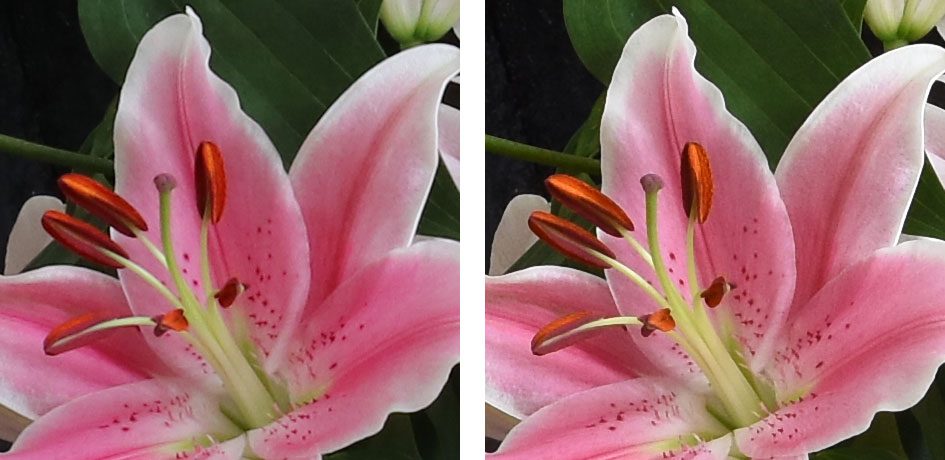
Above left: Canon EOS 80D, above right: Nikon D7200. Both 100% crops from JPEGs at 400 ISO
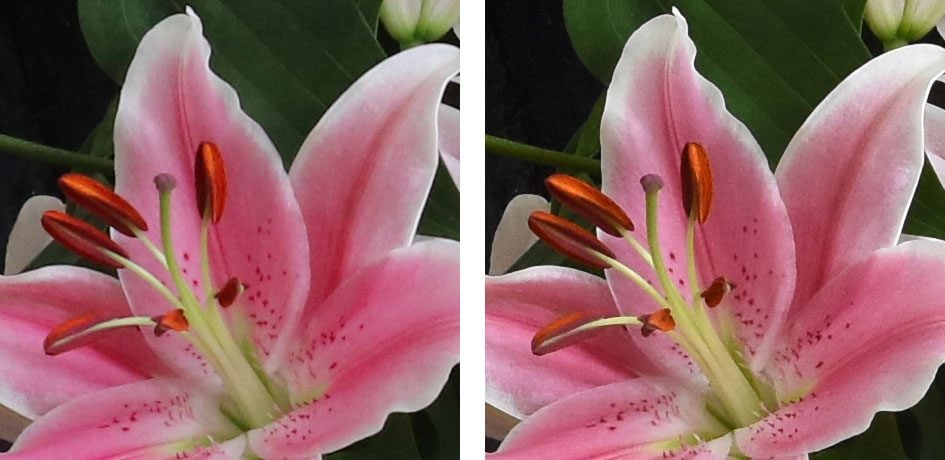
Above left: Canon EOS 80D, above right: Nikon D7200. Both 100% crops from JPEGs at 800 ISO
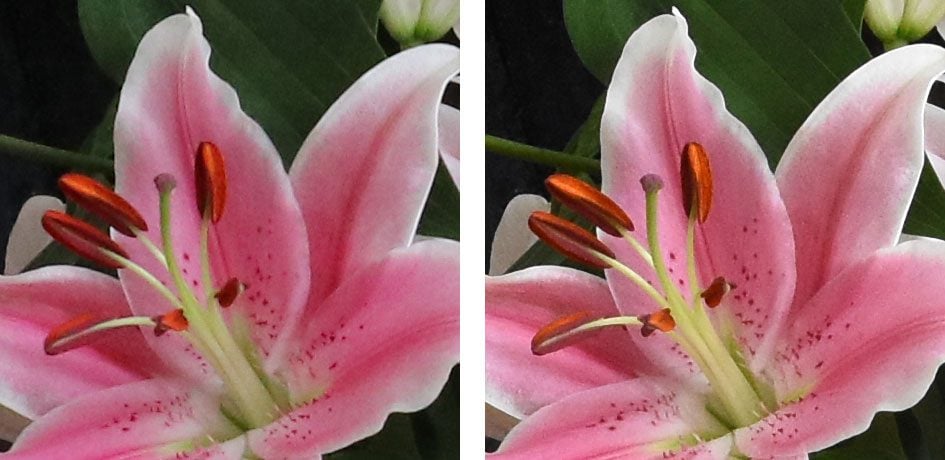
Above left: Canon EOS 80D, above right: Nikon D7200. Both 100% crops from JPEGs at 1600 ISO
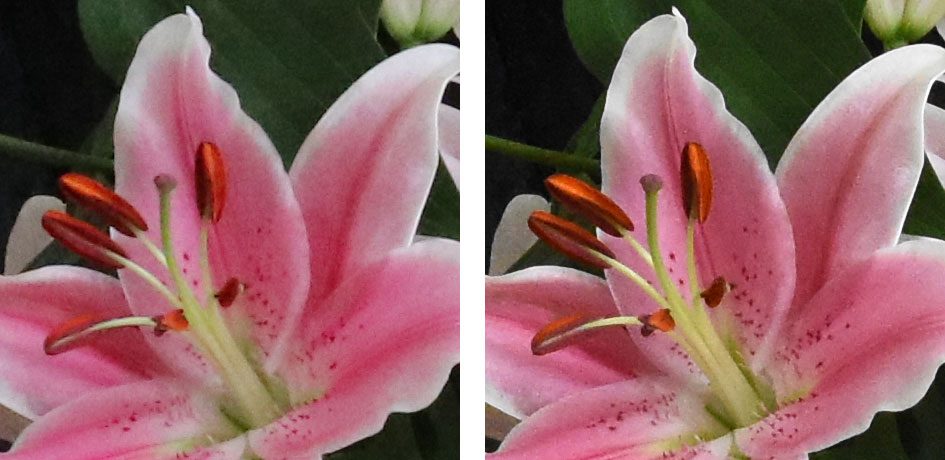
Above left: Canon EOS 80D, above right: Nikon D7200. Both 100% crops from JPEGs at 3200 ISO
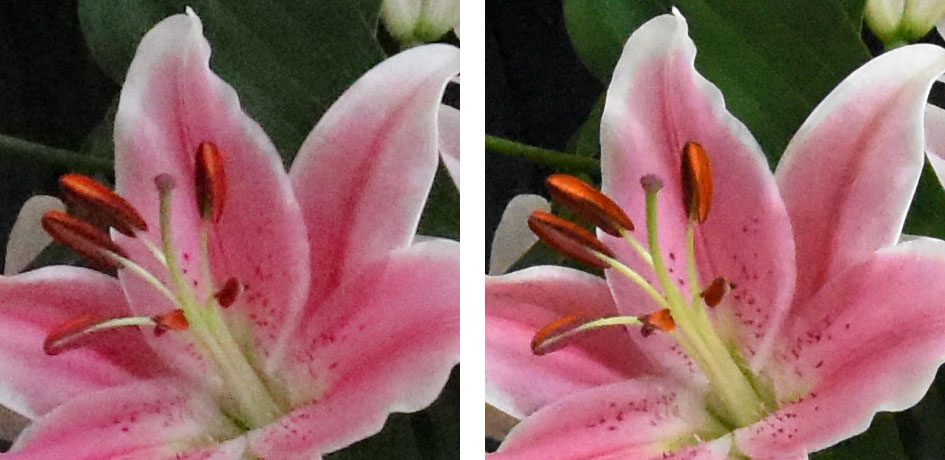
Above left: Canon EOS 80D, above right: Nikon D7200. Both 100% crops from JPEGs at 6400 ISO
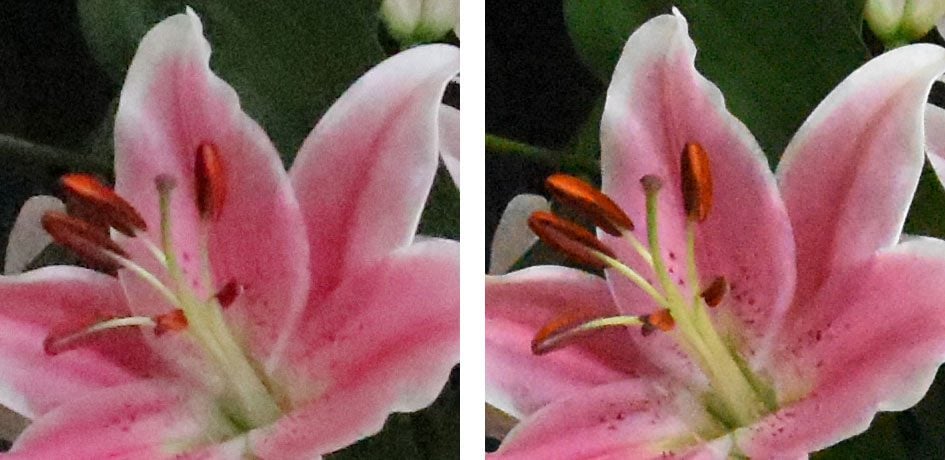
Above left: Canon EOS 80D, above right: Nikon D7200. Both 100% crops from JPEGs at 12800 ISO
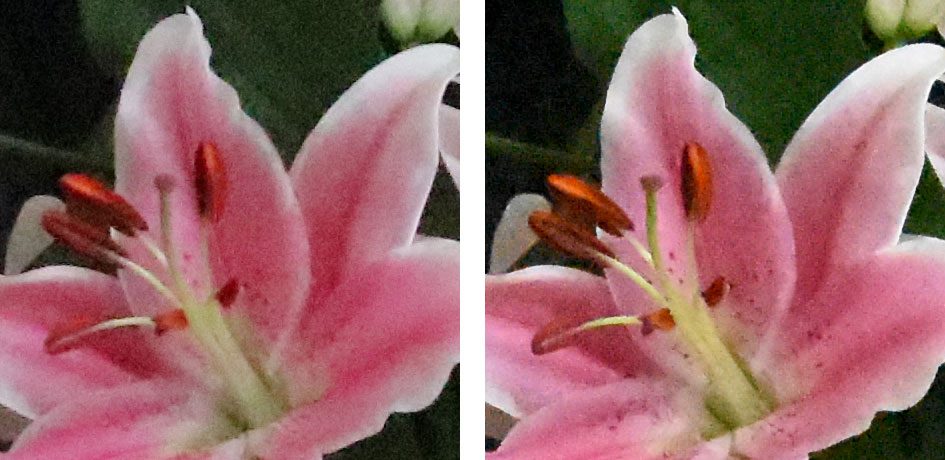
Above left: Canon EOS 80D, above right: Nikon D7200. Both 100% crops from JPEGs at 25600 ISO
Canon EOS 80D vs Nikon D7200 RAW noise
Below are the 100% crops made from RAW images processed in Adobe Camera RAW using identical settings: sharpening of 50 / 0.5 / 36 / 10 and noise reduction set to zero. The high degree of sharpening coupled with zero noise reduction may be extreme, but reveals exactly what’s going on behind the scenes and how much real-life data you have to work with.
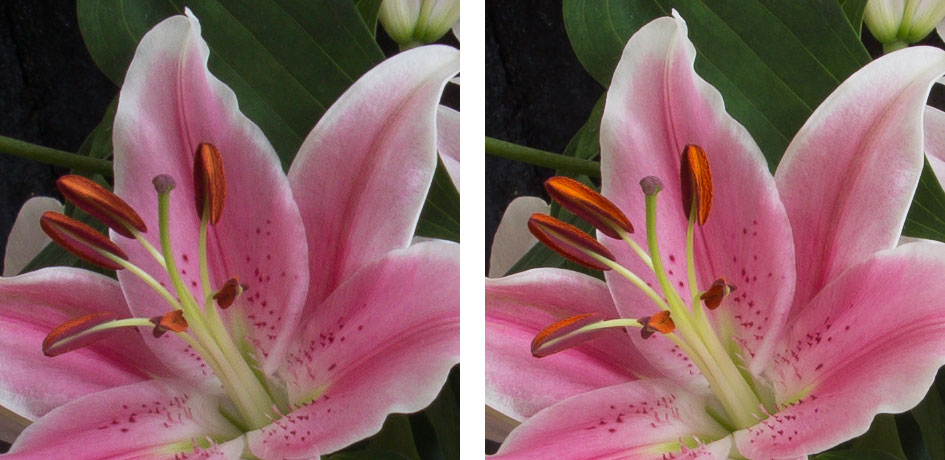
Above left: Canon EOS 80D, above right: Nikon D7200. Both 100% crops from RAW at 100 ISO
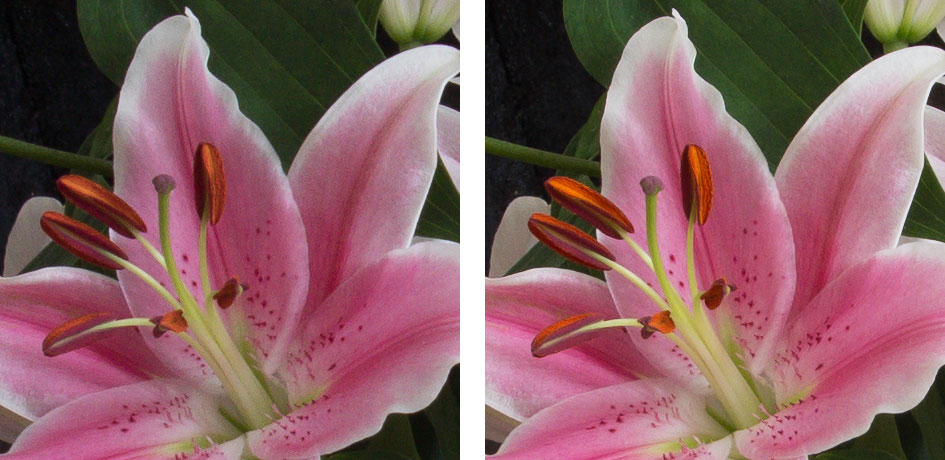
Above left: Canon EOS 80D, above right: Nikon D7200. Both 100% crops from RAW at 200 ISO
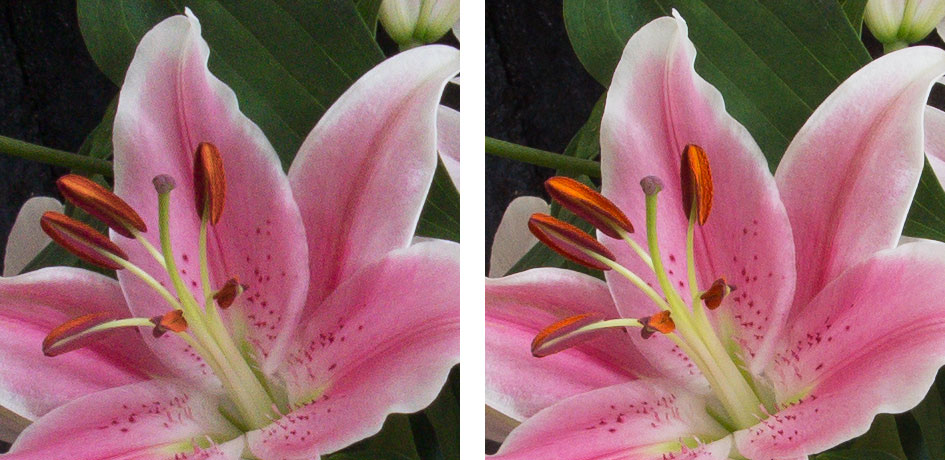
Above left: Canon EOS 80D, above right: Nikon D7200. Both 100% crops from RAW at 400 ISO
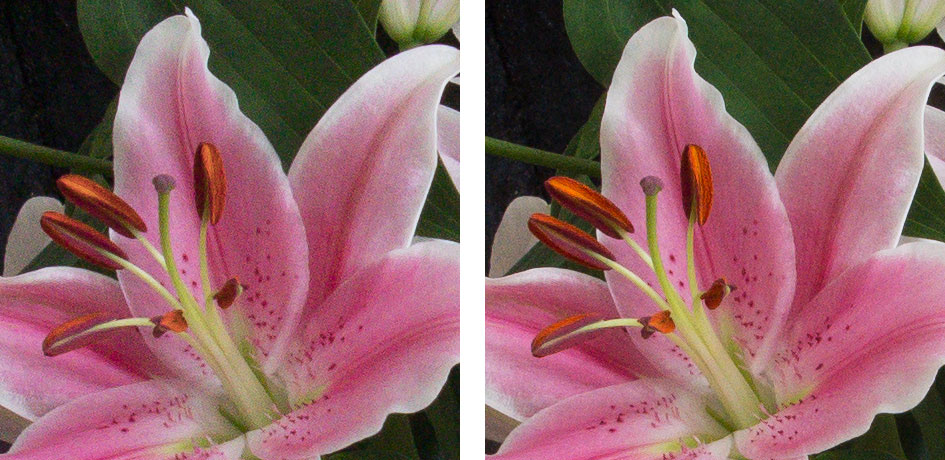
Above left: Canon EOS 80D, above right: Nikon D7200. Both 100% crops from RAW at 800 ISO
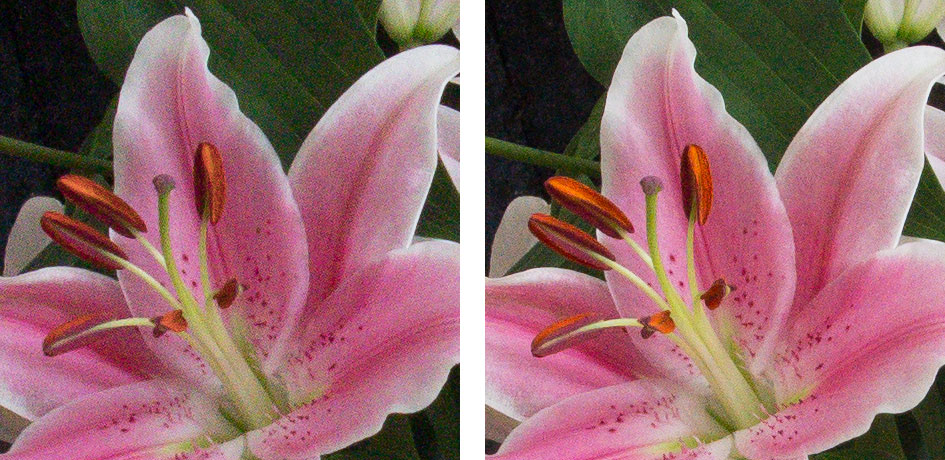
Above left: Canon EOS 80D, above right: Nikon D7200. Both 100% crops from RAW at 1600 ISO
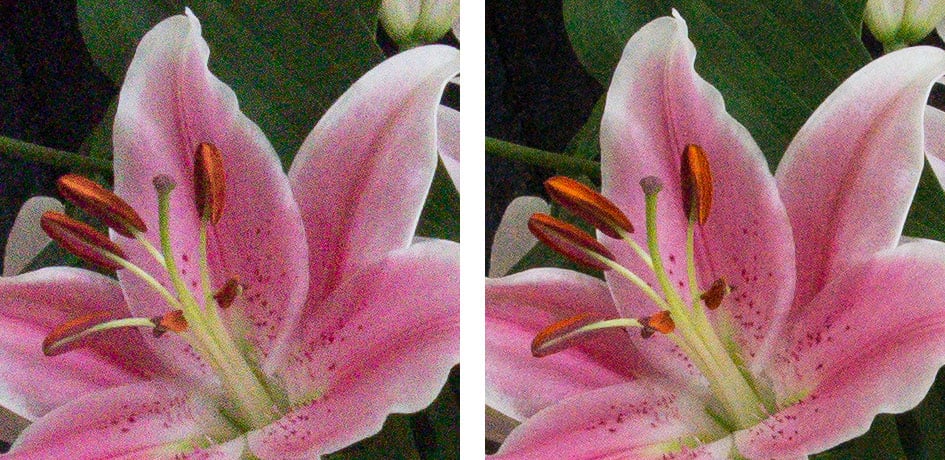
Above left: Canon EOS 80D, above right: Nikon D7200. Both 100% crops from RAW at 3200 ISO
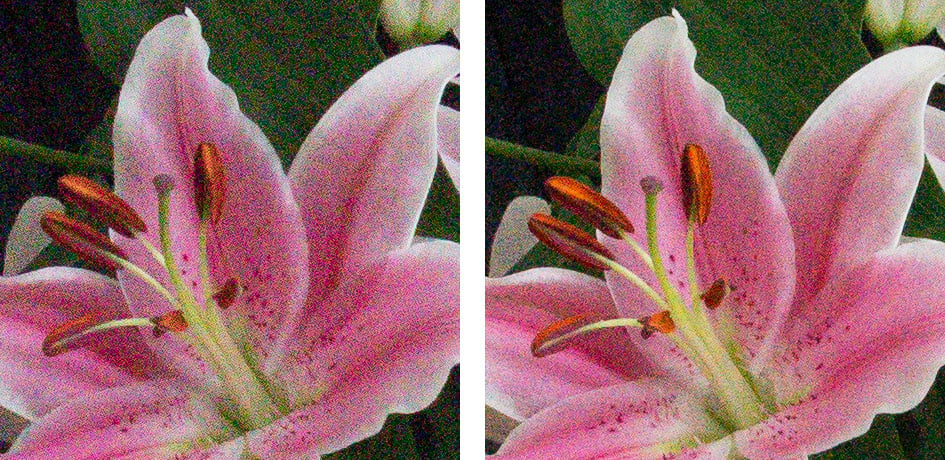
Above left: Canon EOS 80D, above right: Nikon D7200. Both 100% crops from RAW at 6400 ISO
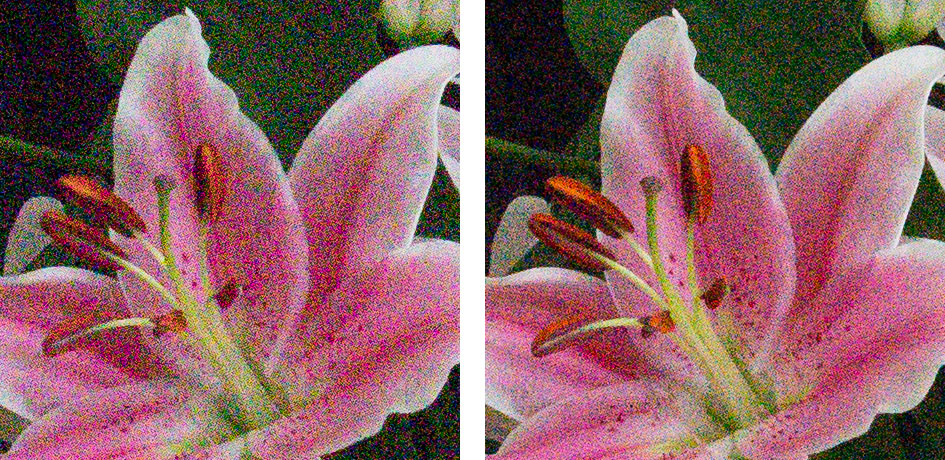
Above left: Canon EOS 80D, above right: Nikon D7200. Both 100% crops from RAW at 12800 ISO
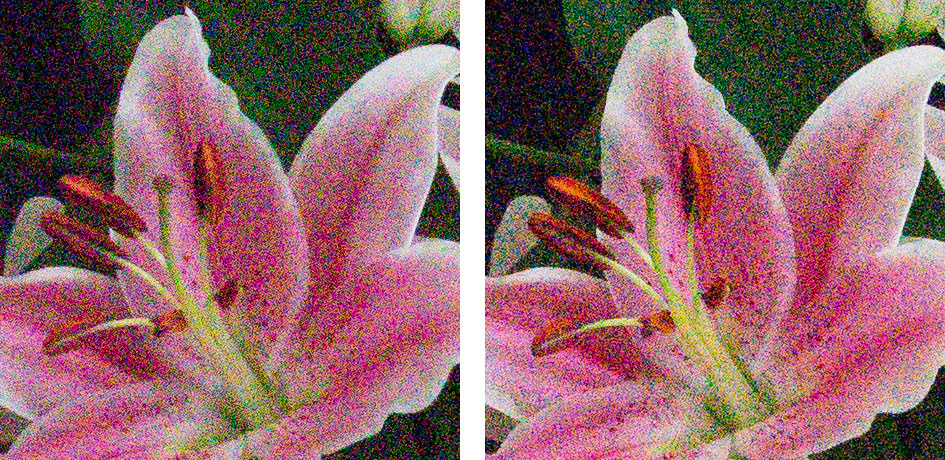
Above left: Canon EOS 80D, above right: Nikon D7200. Both 100% crops from RAW at 25600 ISO
Next check out my Canon 80D sample images or tab to my verdict.




